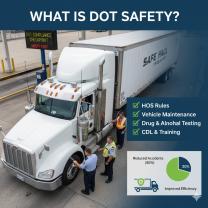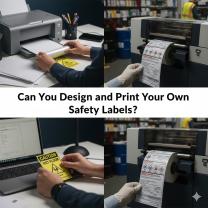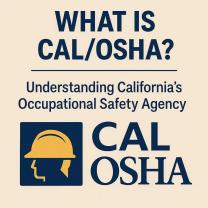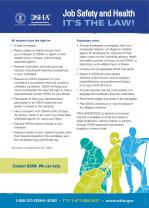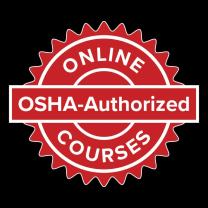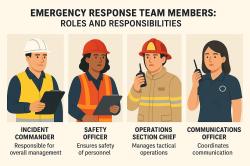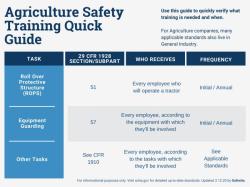What is a site specific safety statement (SSS)?
Site-Specific Safety Statement (SSS): Definition and Importance
In every workplace, safety documentation serves as the foundation for protecting both employers and employees. It provides a structured approach to identifying risks, implementing controls, and ensuring that everyone understands their responsibilities. Comprehensive safety documentation doesn’t just meet compliance requirements — it helps prevent accidents, promote accountability, and create a safer working environment for all.
Among the key documents used in workplace safety management, the Site-Specific Safety Statement (SSS) plays a particularly critical role. An SSS is a tailored document that outlines the unique safety arrangements, risk assessments, and control measures required for a particular site or project. It provides a clear and practical framework for managing health and safety risks based on the specific conditions, activities, and personnel at that location.
While general safety policies describe an organization’s overall safety strategy, the SSS goes further — it’s customized for real-world site conditions. This ensures compliance with occupational health and safety laws while proactively preventing workplace incidents.
What Is a Site-Specific Safety Statement (SSS)?
A Site-Specific Safety Statement (SSS) is a legally required safety document designed to identify and manage hazards associated with a particular site, project, or activity. It goes beyond general safety policies by focusing on the specific risks and operational realities of one location.
An SSS is not a one-size-fits-all document. It’s carefully tailored to the site’s physical environment, the type of work performed, the machinery used, and the personnel involved. By providing detailed safety guidance that reflects on-site conditions, it helps employers and contractors ensure that appropriate controls are in place for every phase of work.
In industries such as construction, engineering, and manufacturing, the SSS serves as a cornerstone of safety compliance. It supports regulatory requirements and aligns with the company’s broader Safety Management System (SMS). While the SMS provides overarching principles and goals, the SSS translates those principles into practical, site-specific actions that can be implemented daily by supervisors and workers.
Why Is an SSS Important for Workplace Safety Compliance?
A Site-Specific Safety Statement is more than an administrative formality — it is a legal and operational necessity. In many countries, including Ireland, employers are legally required to prepare and maintain an SSS under the Safety, Health and Welfare at Work Act. Failure to do so can result in penalties, work stoppages, or legal liability following an incident.
Here are the key reasons why an SSS is essential for workplace safety compliance:
Legal Protection:
An up-to-date and comprehensive SSS demonstrates that an employer or contractor has taken reasonable steps to identify hazards and control risks. In the event of an inspection or incident investigation, it provides documented proof of compliance with safety regulations.Hazard Identification:
The SSS outlines the specific hazards that exist on a given site — from working at heights to handling hazardous materials. This ensures that risks are not overlooked and that proper controls are implemented before work begins.Employee Awareness and Involvement:
When workers understand the SSS, they become active participants in maintaining safety standards. The document enhances awareness of site hazards, safety rules, and emergency procedures, fostering a stronger safety culture.Accident Prevention:
By identifying and managing risks proactively, the SSS reduces the likelihood of workplace accidents and injuries. It supports planning, communication, and safe work practices long before problems arise.Regulatory Compliance and Audit Readiness:
Inspectors and regulators frequently request to review the SSS during site visits. A well-maintained SSS demonstrates organizational diligence and can prevent costly project delays or enforcement actions.
What Should Be Included in a Site-Specific Safety Statement?
A strong SSS should provide a complete, structured overview of all aspects of safety management for a given site. While the exact format may vary, it typically includes the following elements:
Company Details and Site Address
Include the employer’s name, contact details, and the full address of the worksite.Scope of Work and Activities
Clearly define the nature of the project, types of work involved, and the duration or phases of the project.Identified Hazards and Risk Assessments
List all known hazards specific to the site and describe the results of risk assessments for each one.Control Measures
Explain how each risk will be managed — for example, the use of personal protective equipment (PPE), safety signage, designated walkways, emergency exits, and first aid provisions.Roles and Responsibilities
Define the duties of supervisors, safety officers, contractors, and employees to ensure accountability.Emergency Procedures
Outline clear steps for responding to emergencies such as fire, spills, or serious accidents, including contact details for emergency responders.Training and Communication Plans
Document how employees will be trained on site-specific hazards and safety procedures. Include details on safety briefings, toolbox talks, and refresher sessions.Monitoring and Review Process
Explain how the SSS will be monitored and updated. Include checklists, inspection schedules, and review intervals.
Whenever possible, supplement written sections with diagrams, flowcharts, or site maps to make complex information more accessible and easier to follow.
Who Is Responsible for Preparing and Maintaining the SSS?
The primary responsibility for preparing and maintaining a Site-Specific Safety Statement lies with the employer or main contractor. They are legally and ethically accountable for ensuring that the SSS is accurate, up to date, and relevant to the work being performed.
However, effective safety management requires collaboration. Safety officers, supervisors, engineers, and workers should all contribute insights based on their firsthand knowledge of site operations. Engaging these individuals ensures that the SSS reflects real risks and practical safety controls.
All employees must be informed about the SSS and have easy access to it, whether in printed form or through digital platforms. They should understand their responsibilities and follow the procedures outlined in the statement.
Subcontractors working on site must also adhere to the SSS and align their own safety practices with it. Where necessary, they should prepare supplementary risk assessments or method statements that complement the main SSS.
Many organizations also seek assistance from professional safety consultants or Environmental Health and Safety (EHS) specialists. These experts help draft or review the SSS to ensure compliance with legal requirements and industry best practices.
How Often Should a Site-Specific Safety Statement Be Reviewed?
A Site-Specific Safety Statement is not a static document — it must evolve with the worksite. Regular review and revision are essential to maintain its relevance and effectiveness.
An SSS should be reviewed:
At the start of each new phase of work or project stage.
When new equipment, substances, or processes are introduced.
After an accident, near miss, or major safety incident.
At least once a year, as part of the organization’s annual safety review.
Keeping the SSS current ensures that safety measures remain effective as conditions change. Outdated documents can create false confidence and leave gaps in hazard control.
Version control is also critical. Each revision should be dated, signed, and clearly communicated to all staff and contractors. Digital tools can simplify this process, ensuring that everyone on site always has access to the latest version.
Pro Tip: Using Digital Tools for SSS Management
Modern workplaces are increasingly turning to digital safety management tools to handle SSS preparation and updates. These platforms allow companies to store, edit, and share safety documentation online, reducing paperwork and minimizing the risk of outdated information being used on site.
Digital systems can automatically track version history, send review reminders, and provide real-time access for supervisors and inspectors. This not only improves compliance but also helps maintain a culture of continuous safety improvement.
Conclusion
A Site-Specific Safety Statement (SSS) is far more than just paperwork — it is a practical, living document that safeguards lives, ensures legal compliance, and promotes a strong safety culture. By clearly identifying risks, defining responsibilities, and outlining emergency procedures, it turns safety policies into actionable steps on the ground.
Regular reviews, employee involvement, and clear communication are key to making the SSS effective. Every worker should understand its contents, follow its procedures, and contribute to keeping it up to date.
Ultimately, a well-prepared and actively maintained SSS helps create a workplace where safety is not just a requirement, but a shared value — protecting people, productivity, and reputation alike.



